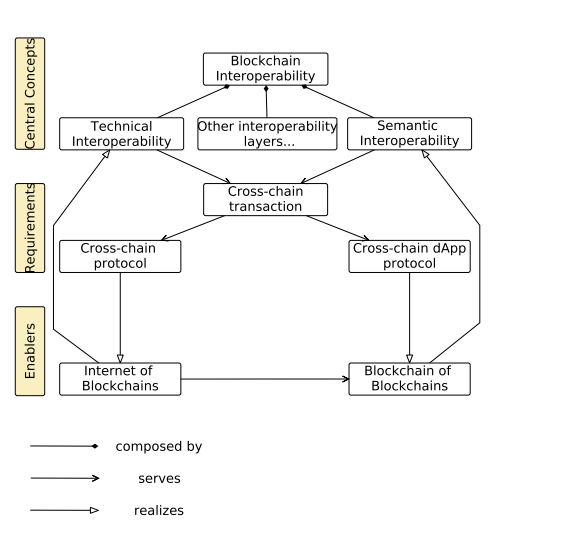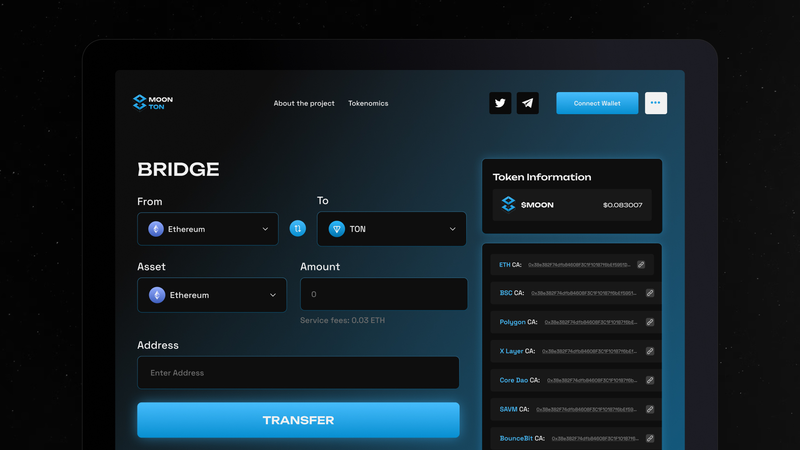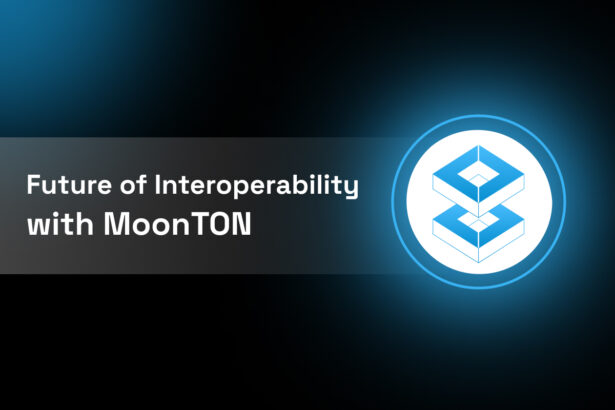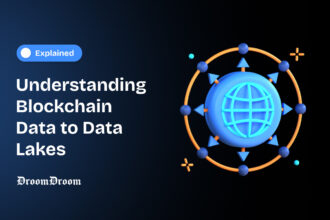Blockchain technology has long promised decentralization, but as the number of blockchain networks grows, the ability for these networks to communicate seamlessly is no longer optional—it’s imperative.
The future of interoperability with MoonTON exemplifies this shift towards cohesive blockchain environments. MoonTON enables secure and seamless token transfers between distinct ecosystems. As demand for cross-chain interactions grows, focused interoperability solutions will play a crucial role in connecting blockchain networks and driving widespread adoption.
The Rising Demand for Seamless Blockchain Interactions
The cry for blockchain interoperability grows louder each day. As decentralized applications (dApps) and decentralized finance (DeFi) platforms flourish, the market for interoperability solutions is poised to leap from $0.54 billion in 2023 to an eye-popping $4.5 billion by 2030.
This surge isn’t just a trend; it’s a response to the critical need for fluid data exchange across networks and the ever-widening embrace of blockchain technology across industries like finance, healthcare, and supply chain management.
As the image below illustrates, the concept of interoperability extends beyond mere token transfers; it encompasses multiple layers, including technical and semantic interoperability, which are crucial for enabling cross-chain transactions and dApp protocols.

Despite the unique strengths of different blockchains—Ethereum’s mastery in smart contracts, Solana’s lightning-fast transactions, or the distinctive offerings of the TON network—fragmentation within this expanding universe presents a significant hurdle. Users often find themselves managing multiple wallets, navigating various interfaces, and shouldering the high costs of moving assets across networks.
The solution?
The future of interoperability with MoonTON transforms these isolated experiences into a cohesive, user-friendly journey.
Blockchain Interoperability: Where We Stand Today
The push for blockchain interoperability is marked by remarkable advancements, coupled with ongoing challenges. Cross-chain protocols like Cosmos’ Inter-Blockchain Communication (IBC) and Polkadot’s relay chain have laid the groundwork for effortless asset transfers and data exchanges between blockchains.
These solutions are essential in enabling interoperability, yet they also spotlight the complexities of ensuring security, scalability, and efficiency.
Take cross-chain bridges, for instance. These are vital for enabling the future of blockchain interoperability by allowing assets to move from one blockchain to another. However, they also introduce new vulnerabilities.
Centralized bridges, in particular, can become single points of failure, making them tempting targets for attacks. Securing these interactions is not just a priority; it’s the bedrock on which the future of blockchain interoperability will be built.
This is where the future of interoperability with MoonTON begins to shine, offering solutions that transcend mere token transfers and enable a comprehensive framework for cross-chain communication.
MoonTON: A Case Study in Reimagining Blockchain Connectivity
MoonTON emerges as a key innovator in the future of blockchain interoperability, focusing specifically on facilitating seamless token transfers between Ethereum, Solana, and TON.
Unlike traditional bridges, which often try to connect a wide range of blockchains, MoonTON zeroes in on the critical task of moving assets into and out of the TON ecosystem, ensuring a deep and focused integration.
The Bridge Architecture: A Technical Dive
At the heart of MoonTON is its advanced bridge architecture, meticulously designed to ensure secure and efficient token exchanges. The architecture hinges on a lock-and-mint mechanism, where tokens are locked in a smart contract on the source chain and a wrapped version is minted on the destination chain.

For instance, consider the Solana-TON bridge operation:
- Locking and Minting: When a user sends SPL tokens to the Solana SPL Token Vault, the tokens are locked, and a lock event is emitted. This event is detected by a multisig attestation committee— a group of validators who verify the transaction’s validity. Once validated, the corresponding wrapped tokens are minted on the TON blockchain.
- Security through Multisig: The multisig committee plays a crucial role in maintaining security. It acts as a trust-minimized middle layer, ensuring that no single validator can compromise the system. This high threshold for validation prevents rogue attestations and protects against counterfeiting or invalid mints.
- Reverse Flow: The process works in reverse when transferring tokens from TON back to Solana. Users burn their wrapped tokens on TON, triggering the unlocking of the corresponding native tokens on Solana.
This lock-and-mint approach, combined with advanced security measures like omni-signature verification and listening nodes, allows MoonTON to handle high transaction volumes while ensuring the integrity and security of every cross-chain transfer.
These features make MoonTON a powerful tool for DeFi participants, traders, and developers looking to build interoperable applications that can leverage the unique capabilities of the TON blockchain.
MoonTON’s strength is in providing a specialized, secure, and efficient interoperability solution that is tailored to TON, rather than attempting to be a one-size-fits-all platform.
MoonTON’s leadership echoes this sentiment,
Our goal with MoonTON is to create a bridge that not only connects blockchains but does so with a level of security and efficiency that users can rely on. By focusing on TON, we’re ensuring that our technology meets the highest standards for the communities we serve.
Joseph Merman, CEO, MoonTON
The Future of Interoperability with MoonTON
Blockchain interoperability isn’t just a technical challenge; it’s the key to freeing up the full potential of decentralized technology.
The need for the future of blockchain interoperability goes beyond simple token transfers; it’s about creating a holistic system where diverse blockchains can communicate, share data, and operate together seamlessly.
According to a comprehensive research paper on blockchain interoperability, this concept is pivotal for addressing the fragmentation within the blockchain world, which is often marked by isolated networks with unique protocols and capabilities.
The research categorizes various interoperability solutions into frameworks, such as public connectors and Blockchain of Blockchains, clearly making us think about the necessity of these systems in overcoming the current limitations.
The contribution to the future of interoperability with MoonTON is part of a larger shift towards a more connected and efficient blockchain ecosystem. It fits into this broader framework by providing a specialized solution tailored to the TON ecosystem, enhancing its integration with other major networks like Ethereum and Solana.
As we look to a more interconnected blockchain ecosystem, the future of interoperability with MoonTON stands as a beacon for next-generation blockchain solutions, paving the way for a truly decentralized future.




















